#american war of independence
Text
Who Wants a Non-Hessian German Troops of the American Revolution Uniform Identification Flow Chart?
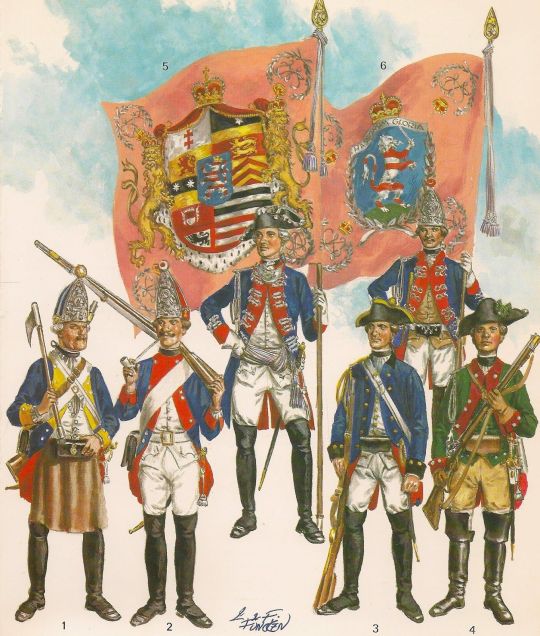
Now you too can roleplay as a harried British staff officer trying to identify which troops are encamped where, or a devious rebel spy collecting intelligence.
As folks may or may not know, only roughly 50% of the German state troops who served the British Crown during the American Revolution were “Hessians” from Hesse-Cassel. There were six other states that provided “subsidy troops.” Here’s how to tell them apart at a glance.
Are their uniforms predominantly dark blue? If yes, go to the paragraph numbered 4. If no, go to the para numbered 2.
2. Are their uniforms predominantly white? If no, go to the para numbered 3. If yes, those are troops from Anhalt-Zerbst. The only German state involved in the war to take its uniform and organisational cues from Austria rather than Prussia, the single Anhalt-Zerbst line regiment deployed to America wore white regimental coats faced with red. Their grenadiers wore bearskins rather than metal-faced caps (the only other German state to do this was Waldeck). One battalion also, according to one shocked British officer, had one of the most outrageous-looking uniforms of the war, including hussar hats, red and yellow waist sashes and red cloaks - these may have been “pandour” irregulars from the edges of the Austrian empire.

3. The coats are neither white nor blue, so they must be red. In this case, the troops are Hanoverian. While still mostly following Prussian style, because they shared a ruler with Britain, Hanoverian troops wore red. Five Hanoverian regiments assisted Britain with vital Mediterranean defence during the American Revolution, before going on to fight in India. They were the only redcoat Germans fighting for the Crown outside the British Army.
4. Your Germans are wearing blue coats. Are the buttons on the coat lapels arranged 1-2-1, and do the cuffs have a “Swedish” style slit to them? If no, go to the para numbered 5. If yes, they’re from Brunswick-Wolfenbüttel. Brunswick provided the most soldiers after Hesse-Cassel, and arguably the most rounded force, with four line regiments, one dragoon regiment, one grenadier battalion and one light infantry battalion. But whether jäger, musketeers or grenadiers, they almost all had coat buttons in groups of 1-2-1 and the slit-style cuffs. Fun fact; the Brunswick crest of a racing white horse on a red field was the same as neighbouring Hanover’s.

5. Your Germans are wearing blue, but don’t have buttons in 1-2-1 and Swedish cuffs. Do they have yellow facings, and cuffs with buttons placed both horizontally and vertically? If no, go to the para numbered 6. If yes, they are from Waldeck. This German state usually provided troops for the Dutch, but raised a new unit, the 3rd English-Waldeck Regiment, for service in America. They mostly fought against the Spanish in the Deep South, where they were decimated by disease. If the unusual position of the buttons on the cuff isn’t enough, look for the belt plate bearing “FF” for “Fuerst Friedrich,” the state’s ruler.
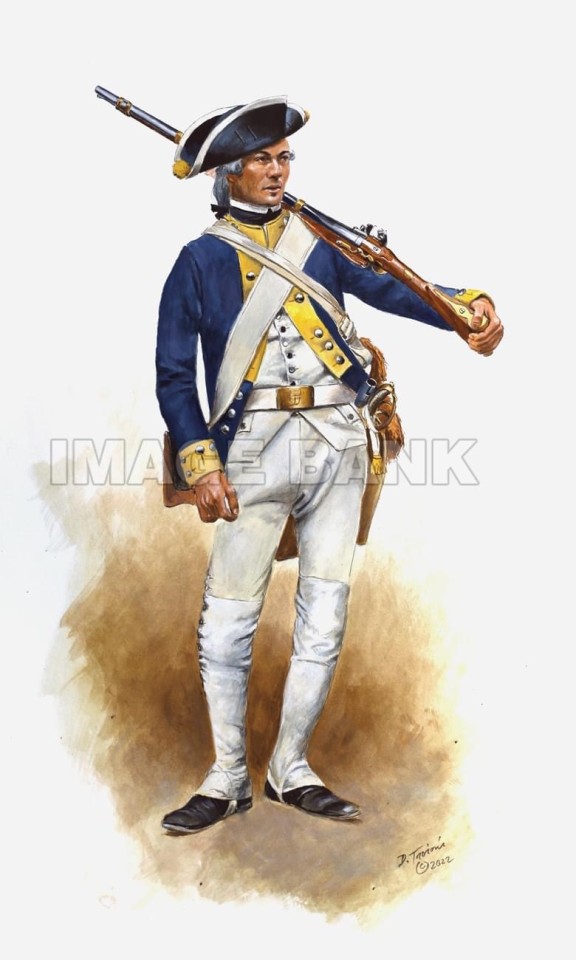
6. Do your blue Germans have red facings, cocked hats and unusual lace on their coats, shaped like a figure-of-eight? If no, go to the para numbered 7. If yes, they’re from Hesse-Hanau. This state was closely related (in the sense of its ruler, literally) to Hesse-Cassel, yet remained independent. While it provided a small amount of artillery, jägers and freikorps light infantry, its main contribution was a single line regiment, Erbprinz. Their distinctive features were scalloped lace on their cocked hats and the figure-of-eight “Brandenburg” style lace. There was also a Hesse-Cassel Regiment Erbprinz (even sharing the same colonel-in-chief), but they were fusiliers with caps rather than the Hesse-Hanau musketeers with their cocked hats. Check the mistake made by this artwork - these are Hesse-Hanau soldiers from the Infanterie Regiment Erbprinz, but they’re wearing Cassel fusilier caps. Bonus fact; Hanau and Cassel’s crest both features a rampant lion with red and white stripes, but there are subtle differences - they face opposite directions, the style of stripes are slightly different, and the Hanau lion lacks the Cassel one’s crown, but does wield a sword.

7. Do your blue-coated Germans have a black eagle on their flags and grenadier cap plates? If no, they’re probably from Hesse-Cassel. If yes, they’re from Ansbach-Bayreuth. This German state consisted of two provinces, Ansbach and Bayreuth (funny that). Besides jägers and some battalion guns, their main contribution was two infantry regiments, one from each of the two provinces. Their ruler’s crest was a black eagle, similar to the Prussian one.

Of course these posts don’t account for the uniforms of the jäger corps, or musicians, or any artillery, but it can serve as a rough guide. For the proper detail, you’ll have to buy my forthcoming book on the topic!
Also would be pretty cool if someone made an actual flow chart out of this, just saying!
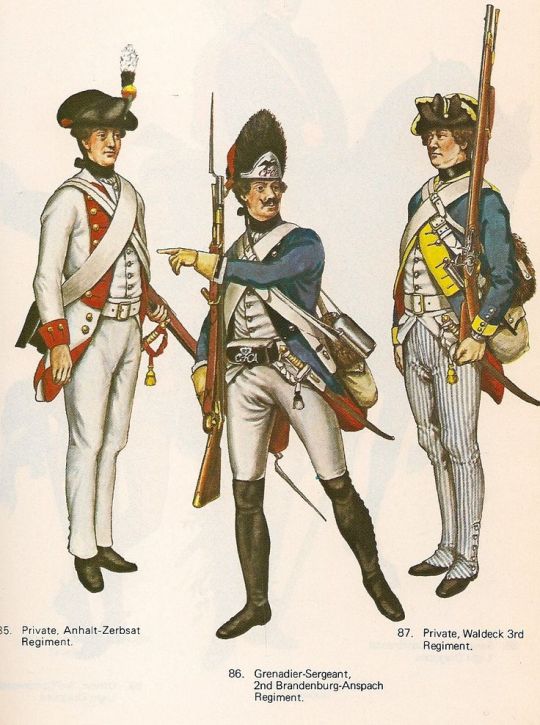
#hessian#hessians#german#germany#german army#german military#18th century#history#military history#american revolution#revwar#american war of independence
344 notes
·
View notes
Text
Did you know that John Laurens was a spy?????
I really didn’t til today. Greene appointed him as his personal spymaster and he did a damn good job as an intelligence officer! Really, that is such an interesting fact about this man nobody acknowledges.
“John Laurens returned to his home state after the capture of Cornwallis’s army and Gen. Greene made him his spymaster. Having chaired the legislative committee that wrote the Confiscation Act, Laurens was well poised to obtain exemptions for loyalist planters willing to spy for Congress.” (- Woody Holton, Liberty is Sweet)
#amrev#amrev fandom#the american revolution#American war of independence#John Laurens#spies#history#historian tumblr#the martyr speaks
92 notes
·
View notes
Text
Comic Sans Valentines: British of the American Revolutionary War Edition






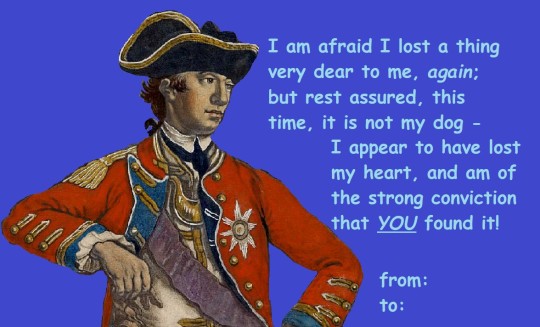
#there goes another round full of misappropriated quotes and deliberately terrible editing for the sake of comedic effect#american revolutionary war#18th century#history#history humour#utter nonsense#american revolution#amrev#american war of independence#benedict arnold#john andre#charles cornwallis#john graves simcoe#john burgoyne#henry clinton#william howe#comic sans valentines#valentines day
85 notes
·
View notes
Text
France every time an American talks about how a bunch of farmers beat the British Empire in the American Revolution:

#american revolution#france#revolutionary war#american history#best frenemies for life#american war of independence
33 notes
·
View notes
Text
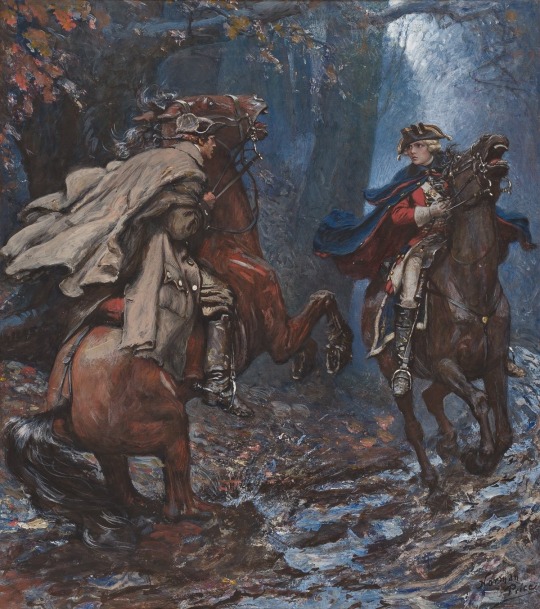
"Gray! What are you doing here without your uniform?"
by Norman Mills Price
Illustration for "Love and the Lieutenant" by Robert W. Chambers
#great britain#england#britain#british#america#north america#revolutionary#romance#novel#history#art#british america#revolution#american revolution#horses#woods#forest#love and the lieutenant#american#american war of independence#robert william chambers#robert w chambers#norman price#norman mills price#american revolutionary war
107 notes
·
View notes
Text
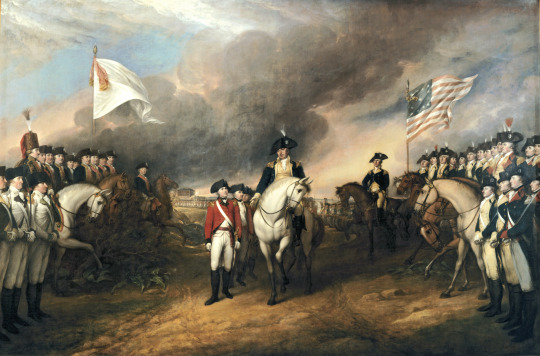
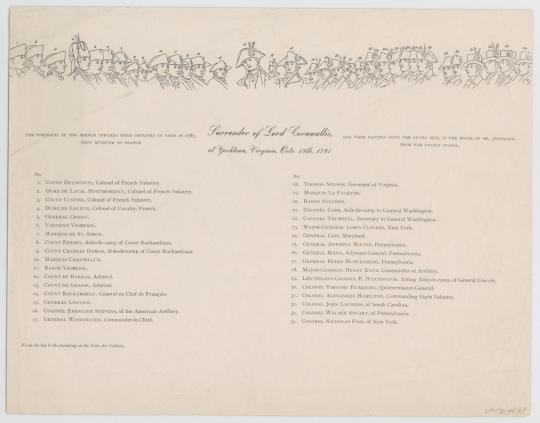

The Surrender of Lord Cornwallis is an oil painting by John Trumbull. The painting was completed in 1820 and hangs in the rotunda of the United States Capitol in Washington, D.C.
The painting depicts the surrender of British Lieutenant General Charles, Earl Cornwallis at Yorktown, Virginia, on October 19, 1781, ending the siege of Yorktown, and virtually guaranteeing American independence. Included in the depiction are many leaders of the American troops that took part in the siege. [X]
#otd#on this day#us history#history#art#john trumbull#american revolution#revolutionary war#american war of independence#united states of america#united states history#october
97 notes
·
View notes
Text
Check out just some of the artwork that you'll see in the Nations & Cannons core rules book.
Wanna see more? Check out: https://www.nationsandcannons.com/
#ttrpg#5e#dnd#revwar#dungeons and dragons#nationsandcannons#revolutionarywar#american war of independence#education#history
3 notes
·
View notes
Text
#OTD in 1791 – First convicts from Ireland arrive in New South Wales, Australia.
After the end of the American War of Independence, Britain had to find new territory to send its convicts. New South Wales (NSW) was selected as a suitable penal colony. Legislation permitting transportation from Britain to N.S.W. was passed in 1784, and the Irish Act followed in 1786.
The eighteen year old, 400-ton ship Queen was one of those contracted to form the third convict fleet to sail…

View On WordPress
#American War of Independence#Australia#England#History of Ireland#Ireland#Irish Convicts#Irish History#New South Wales#Queen Voyages to Australia and convict records
9 notes
·
View notes
Text
BROTHERS AND SISTERS
THE TIME HAS COME

Release the cavalry, release the militia, throw that tea into the harbor, punch the nearest king you see, but most importantly...
RELEASE THE MEMES!!!

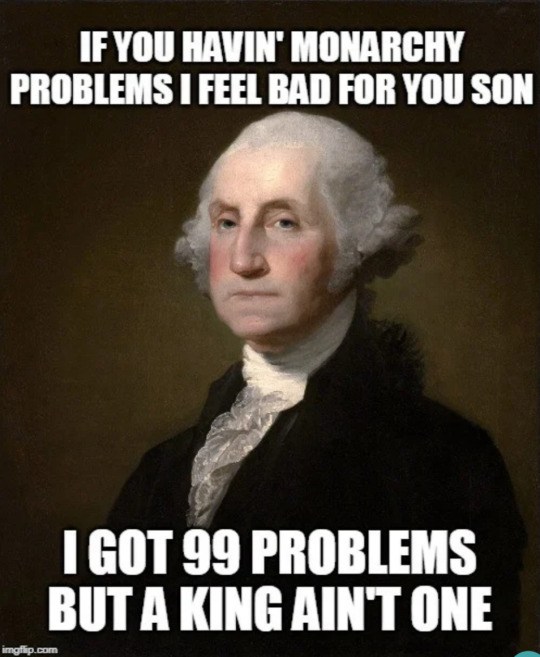
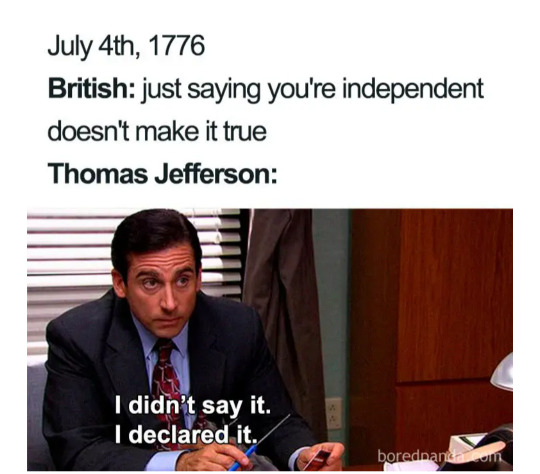

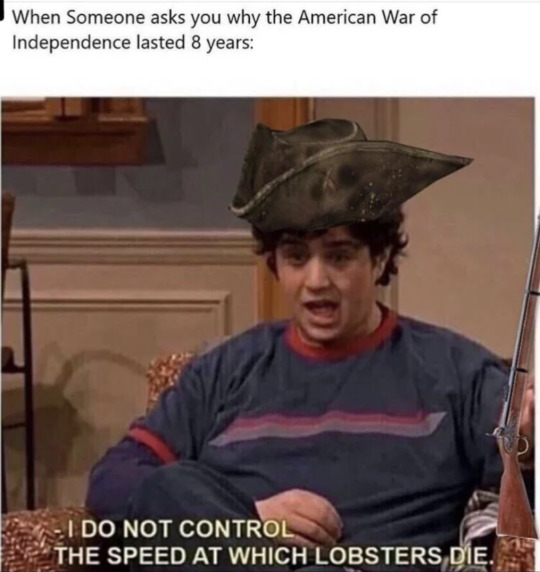
How I think England feels about the 4th of July lmao
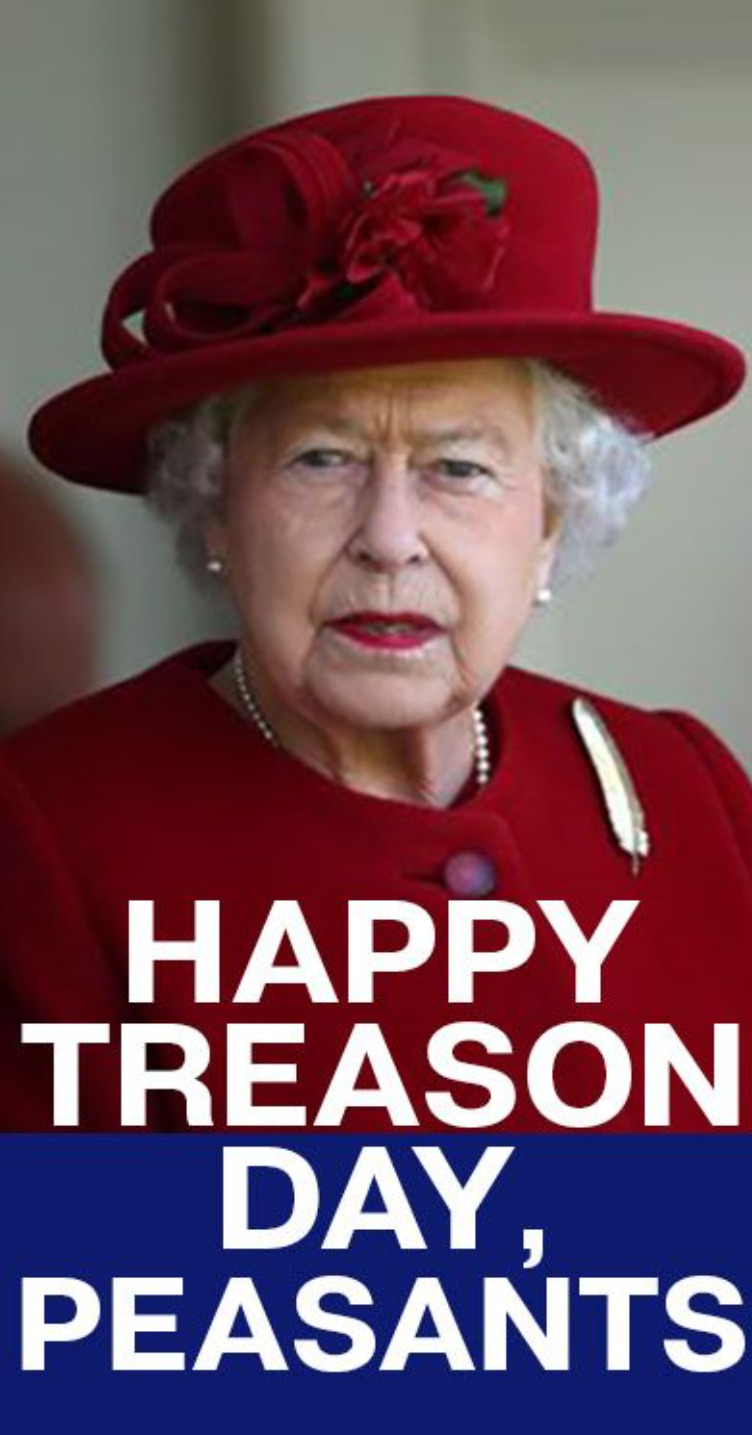
And this is how America responds

I hope you all have a happy and safe Independence Day! Try not to burn down your houses with fireworks! 🎇 🎆
#4th of july#american war of independence#independence day#memes#4th of july memes#today is a good day to not be English#no hate to english people tho#lol#hws england#hws america
14 notes
·
View notes
Text
Music of the Revolutionary Century: How Stands the Glass Around
The first tune in this series is possibly my favorite Revolutionary War tune (made known to me by Brandon F—he has a great video on it if you're interested), though to call it such would technically be a bit of a stretch. The song first appears, to our knowledge, in a 1729 opera called "The Patron," but earned the alternate name "General Wolfe's Song" when it was allegedly sung by General Wolfe the night before his death at the Plains of Abraham during the Seven Years' War. Now, he probably didn't sing it, all things considered, but it's no question why it would have been associated with so morbid an event—it's a remarkably morbid song in itself. I find the last stanza particularly haunting:
'Tis but in vain
I mean not to upbraid you, boys
'Tis but in vain
For soldiers to complain
Should next campaign
Send us to Him that made us, boys
We’re free from pain
But should we remain
A bottle and kind landlady
Cures all again
youtube
The Druids do a suitably haunting version (the entire album is excellent but unfortunately only available on Youtube), which I choose specifically because I feel it's the most faithful to the actual context in which it would have been sung (I'm fond of John Townley's version, as well, but it's a little more upbeat). Here, stripping it down to the vocals and the churchly four-part harmony (the phrases feel a little more isolated, perhaps resigned, because they each cadence into themselves, whereas in Townley's version they lead harmonically into one another), it feels eerily evocative: four soldiers sitting around a fire in the chill night air, knowing that in the cold brightness of the morning they will march into the valley of blood and death... any significance they've ascribed to their own lives has been chipped away over time by their impassive, grueling reality, leaving them with only the nihilistic freedom of knowing they have nothing left to lose.
#ironically I was so happy when my fife major asked me to play it on mandolin this weekend because i adore it so much#kind of wish i wasn't so excited about it because it ruined the immersion a little lol#but yeah I go a little bit feral whenever I hear this song#it's just so haunting#amrev#revolutionary war#folk music#music#18th century#18thc#american war of independence#revolutionary war music#18th century music#american revolution#british army#Youtube#music of the revolutionary century#this is your captain speaking#redcoatposting#the captain's lectures#awi
11 notes
·
View notes
Text

Doing my duty in recruiting for His Majesty's Army, in the King's Own 4th Regiment of Foot. (It was a rather warm weekend, so please excuse my state of undress without my waistcoat.)

I obtained no less than 60 new recruits by mark of their names in proper calligraphy! Though we may have lost many of them in this rebel town of Exeter, what with how many cheers were roared during a reading of that treasonous Declaration of Independence.
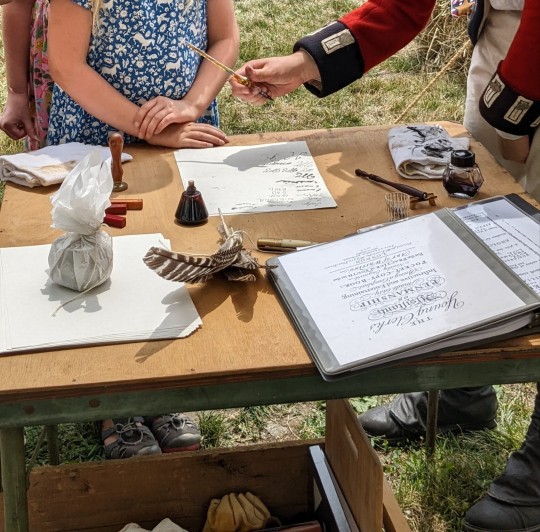
#history#american revolution#american war of independence#reenacting#calligraphy#exeter nh#exeter independence museum
58 notes
·
View notes
Text
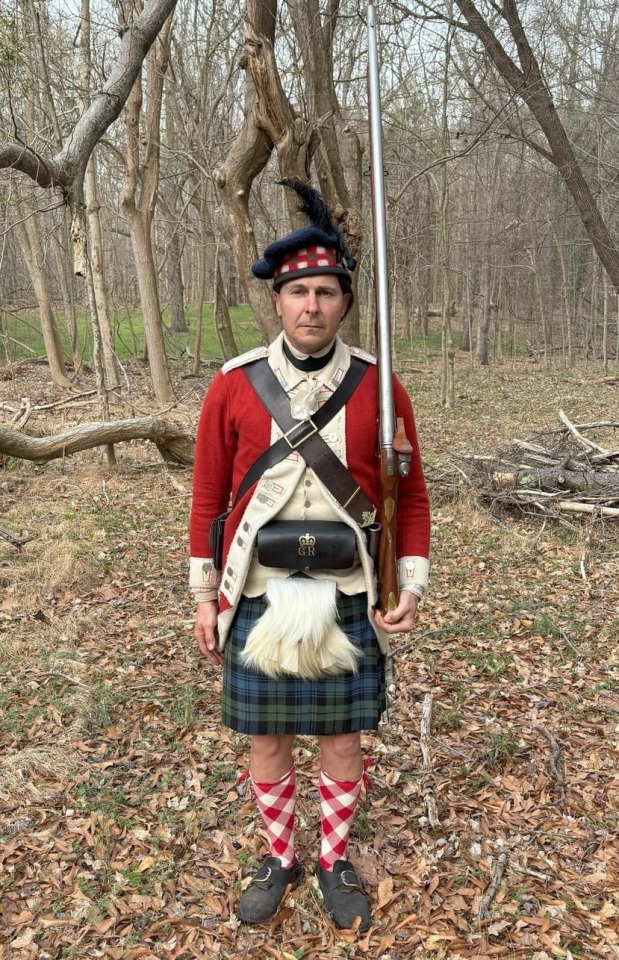
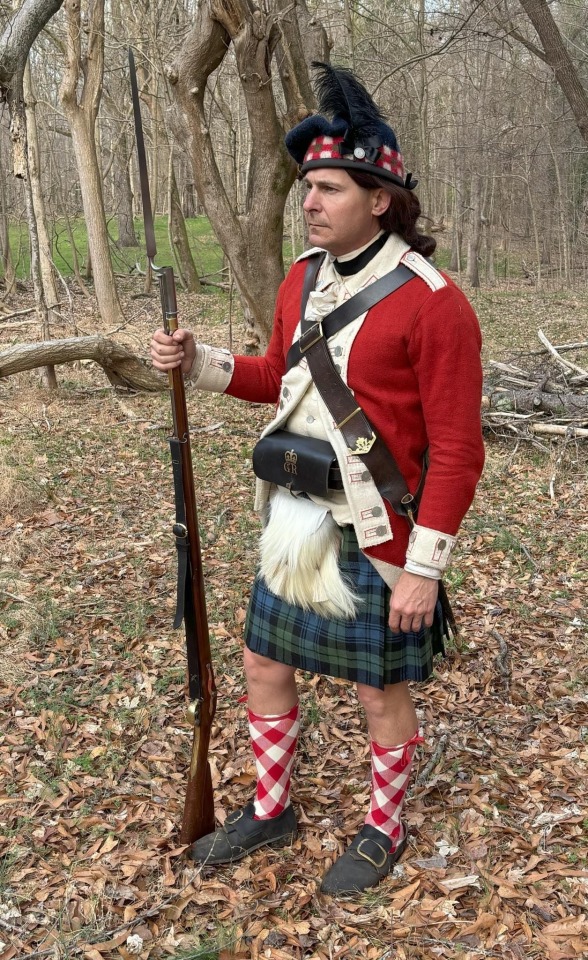

The newest kit - including the new sporran - for the recreated 71st Regiment (Fraser’s Highlanders) during the American Revolution! Pics (and more details) on their Facebook page, “71st Regiment of Foot - Fraser’s Highlanders, Captain Sutherland’s Company.”
#history#british army#military history#18th century#american revolution#redcoat#american war of independence#revwar#redcoats#scotland#clan Fraser#Fraser’s highlanders#71st foot#highlander#highlanders
130 notes
·
View notes
Text
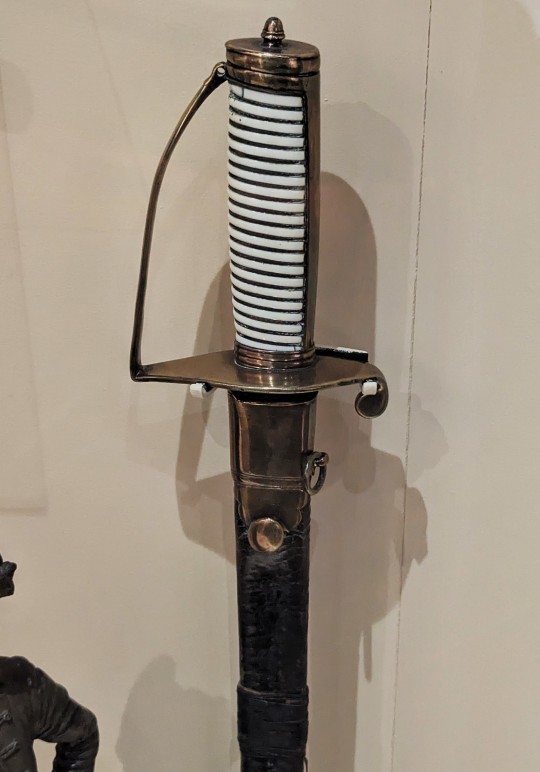
Sword of the 43rd Regiment of Foot from the British Empire dated to 1775 on display at the Rifles Museum in Winchester, England
This sword belonged to Corporal Holden of the 43rd and carried it at the battle of Bunker Hill in 1775 where he was wounded. At the battle the 43rd Regiment of Foot formed part of the assault force that was ordered to attack the heavily defended Breeds Hill. The battle ended in a British victory but through heavy handed assaults like the attack on Breeds Hill the British had lost many soldiers and officers too. Corporal Holden was clearly lucky to only be wounded.
Photographs taken by myself 2023
#sword#art#18th century#military history#georgian#hanoverian#british empire#england#english#american war of independence#rifles museum#winchester#barbucomedie
3 notes
·
View notes
Text

Oh, the subtlety of 18th century satirical plays. Almost lends itself to a tag game.

The dedication even has a more violent interpretation of what we today might call an 18th century second cousin of the booty shorts meme!

And I think I will steal this closing line for my own correspondence. ;)
The play is The Fall of British tyranny: or, American Liberty Triumphant, a Tragi-Comedy, by John Leacock (1776), a relation of Benjamin Franklin's.
#18th century#satire#john leacock#american revolutionary war#american war of independence#amrev#1776#the fall of british tyranny#or ameriican liberty triumphant a tragi-comedy
30 notes
·
View notes
Text
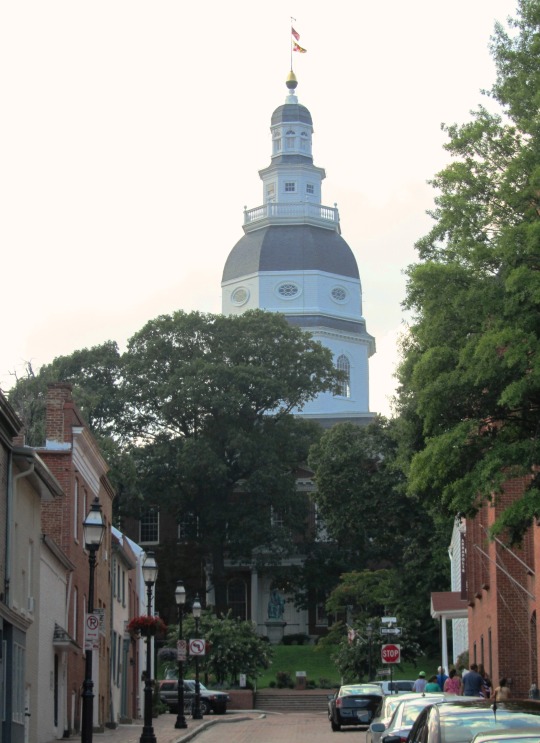







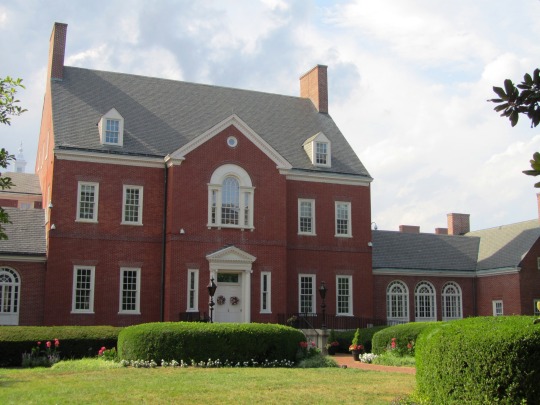




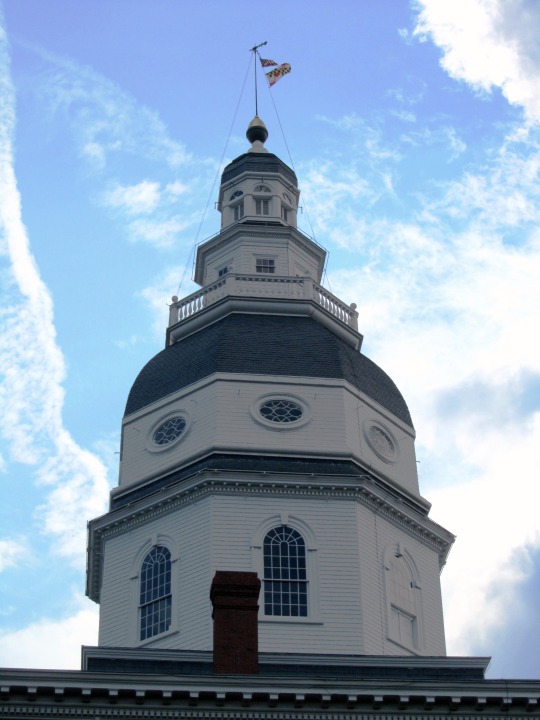

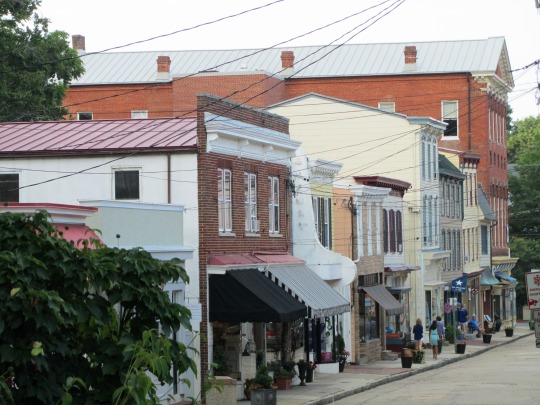

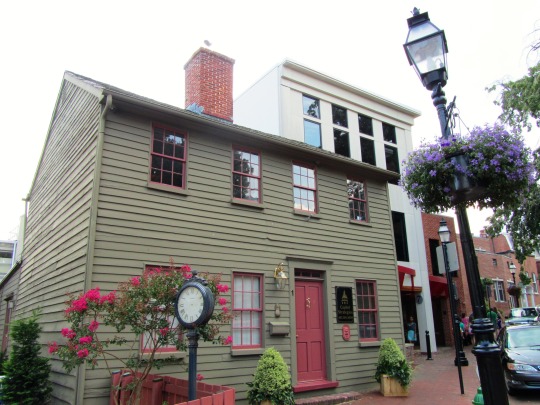





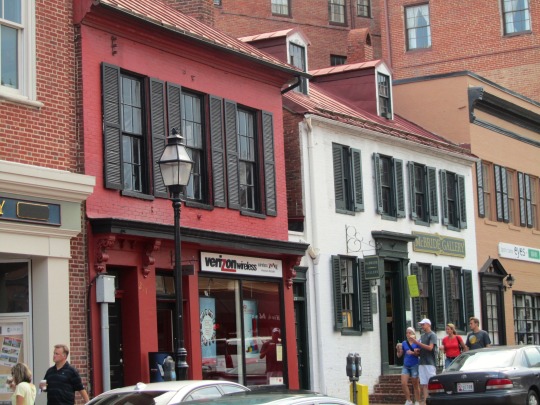




Congress ratified the Treaty of Paris with Great Britain on January 14, 1784.
Ratification Day
Ratification Day is the day when the Treaty of Paris, which ended the American Revolutionary War, was ratified by the Confederation Congress, officially acknowledging the independence of the United States and ending the country’s status as a British colony. It marked the beginning of the United States as a sovereign nation and the end of a war that had been fought for over eight years.
History of Ratification Day
The Treaty of Paris was a treaty signed on September 3, 1783, by Benjamin Franklin, John Jay, and John Adams on behalf of the United States, and by David Hartley on behalf of Great Britain.
Before the treaty was ratified, the United States was still considered a British colony, and the war between the two countries was still ongoing. The treaty brought an end to this conflict and officially recognized the independence of the United States. It also established the boundaries of the new nation, which included all the land east of the Mississippi River and north of the southern border of Florida.
Ratification Day is an important day in American history celebrated by many Americans as a symbol of their country’s independence and freedom.
Ratification Day Timeline
April 19, 1775 The Battle of Lexington and Concord
British troops and American colonists clash in Lexington and Concord, marking the beginning of the American Revolutionary War.
July 4, 1776 Declaration of Independence
The Continental Congress adopts the Declaration of Independence, declaring the colonies’ independence from Great Britain.
October 19, 1781 The war comes to an end
The American Revolutionary War comes to a close with the British surrender at the Battle of Yorktown.
September 3, 1783 Treaty of Paris is signed
Benjamin Franklin, John Jay, and John Adams sign the Treaty of Paris on behalf of the United States, while David Hartley signs on behalf of Great Britain.
January 14, 1784 Treaty of Paris is ratified
The Continental Congress officially ratifies the Treaty of Paris, ending the American Revolutionary War and recognizing the independence of the United States.
How to Celebrate Ratification Day
There are a few different ways that someone can celebrate this important day in American history.
Attend a Local Event or Parade
Many cities and towns hold events or parades on Ratification Day to celebrate the country’s independence. This could be a great opportunity to learn more about the history of the day and get involved in the community.
Fly the American Flag
One simple way to show your patriotism on Ratification Day is to fly the American flag outside your home or business. This is a great way to show your support for the country and its history.
Find Out More About Ratification Day
Ratification Day marks a significant moment in American history, and there are many resources available for learning more about the event. You could read a book or watch a documentary about the American Revolutionary War and the signing of the Treaty of Paris.
Host a Patriotic Party
If you want to celebrate Ratification Day with friends and family, consider hosting a patriotic party. This could include decorations in red, white, and blue, as well as American-themed food and activities. You could also play patriotic music or watch a movie about American history.
Source
#US Congress#ratified#Treaty of Paris#14 January 1784#240th anniversary#USA#US history#Maryland#summer 2013#original photography#architecture#cityscape#Ratification Day#RatificationDay#American Revolutionary War#American War of Independence#end#Annapolis#tourist attraction#landmark#Maryland State House#Government House#travel#vacation
2 notes
·
View notes
Text
I very nearly thought Chris was going to say, "...there are a ton of little inaccuracies just in these 40 seconds that I could easily spend far too long picking apart, but I'm not going to... because that's Brandon F.'s job." LOL.
youtube
Phew, these are two series that I think we're all worse off for knowing that they exist. To Chris' point though: no, I don't think America can ever have completely normal media about 18th century American history. We can't even be normal about teaching it in school, we're not exactly giving ourselves a leg up on portraying it with nuance in film.
#Chris the Redcoat#historiography#American War of Independence#also like OMG conservatives really have no idea how many queers are into the 18th century do they
3 notes
·
View notes